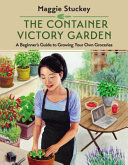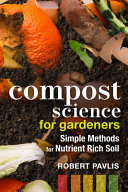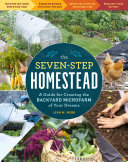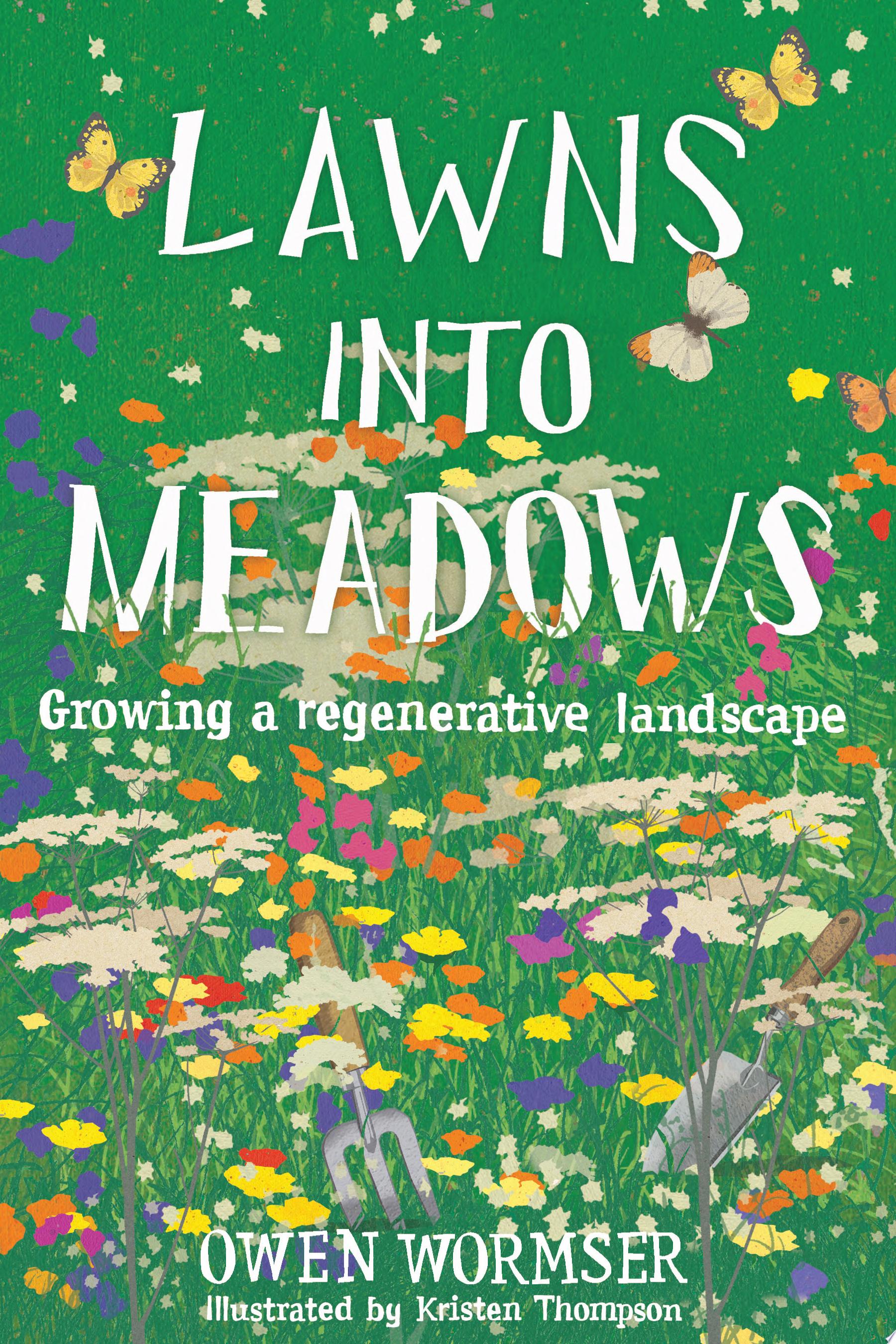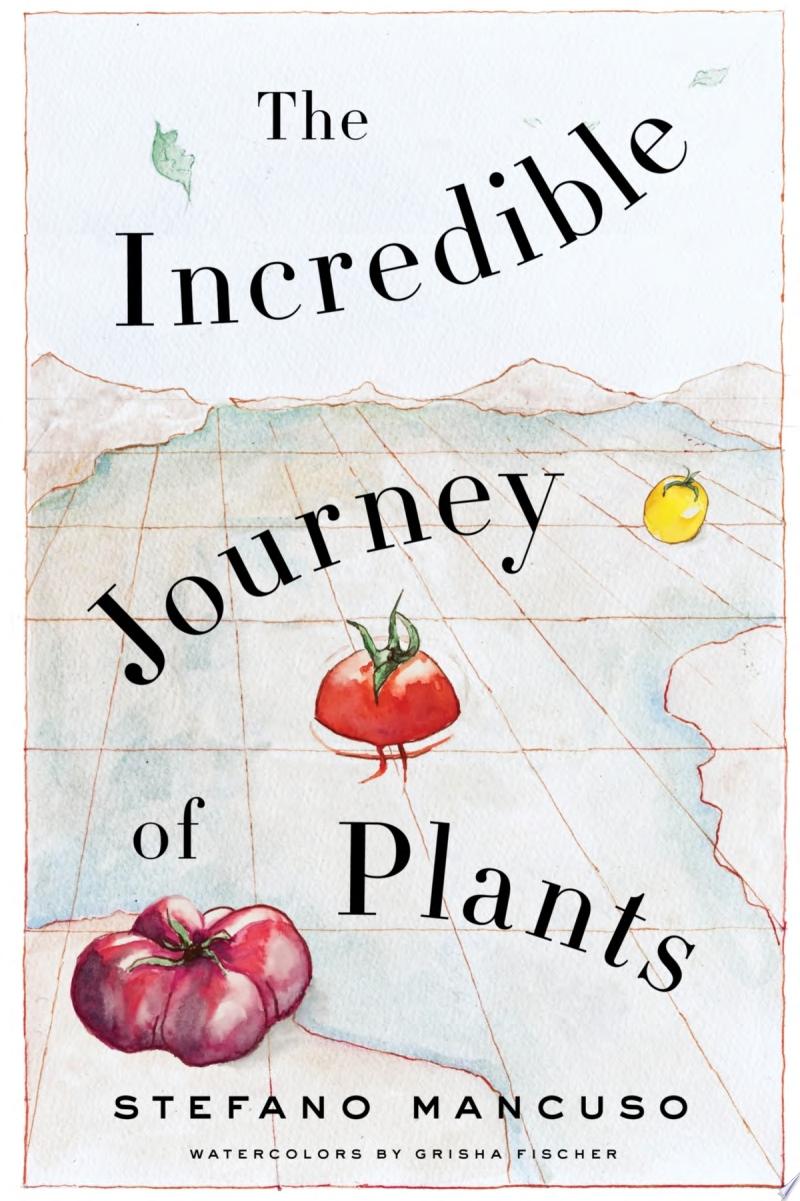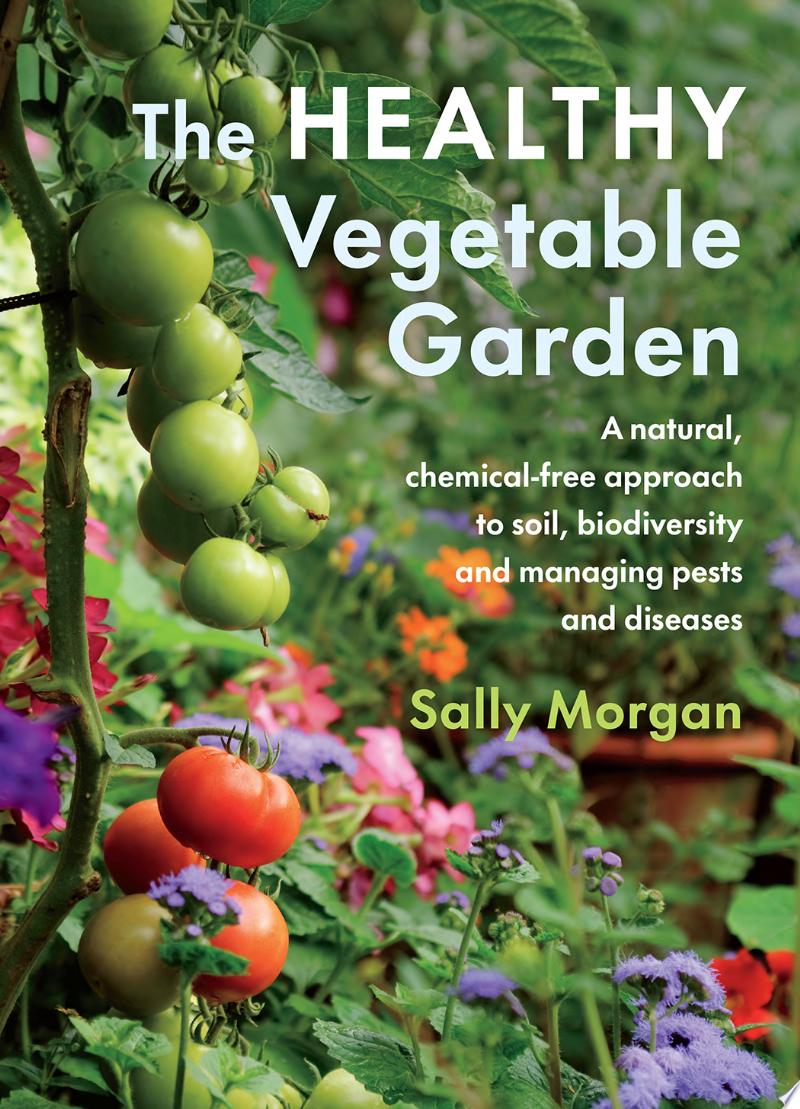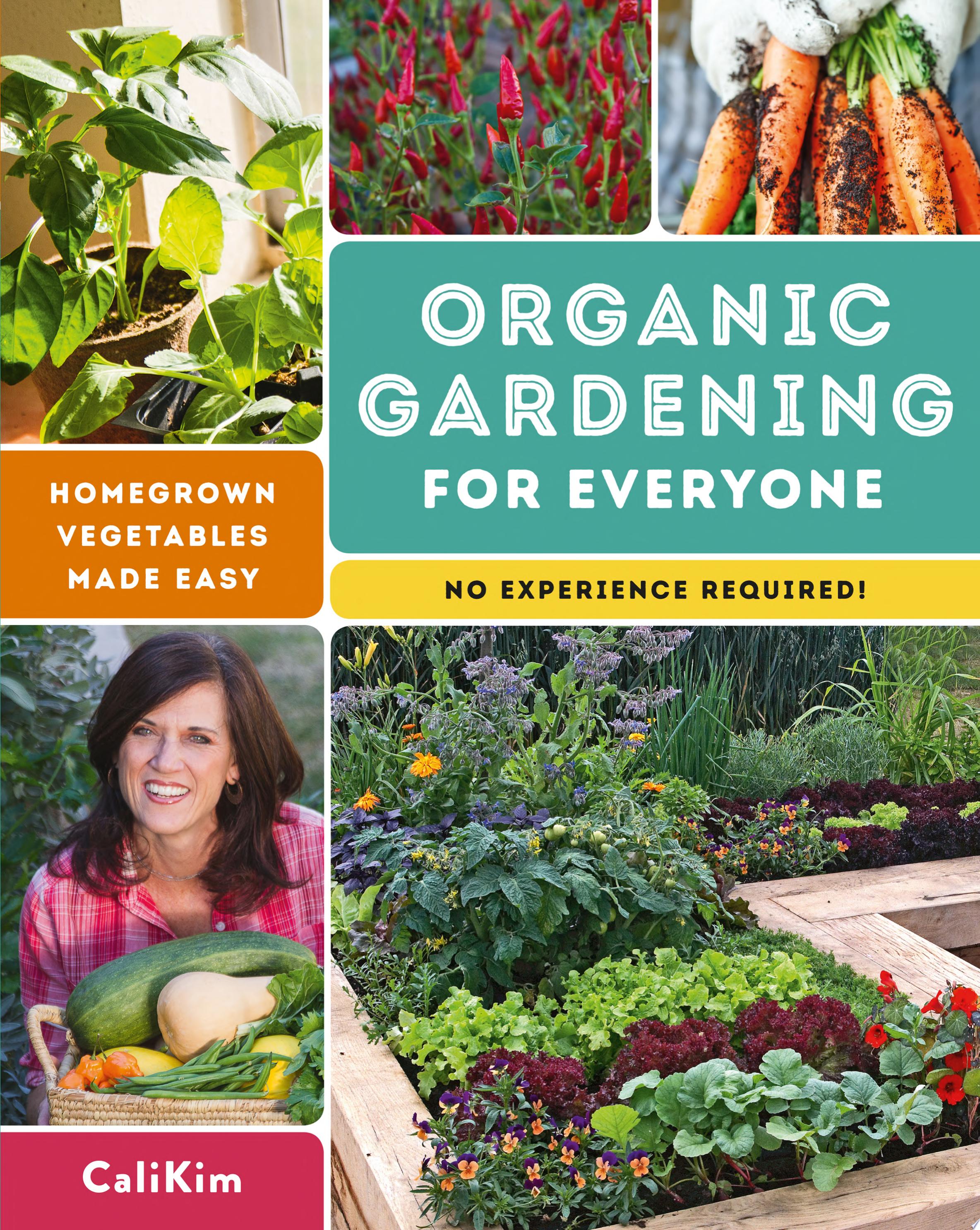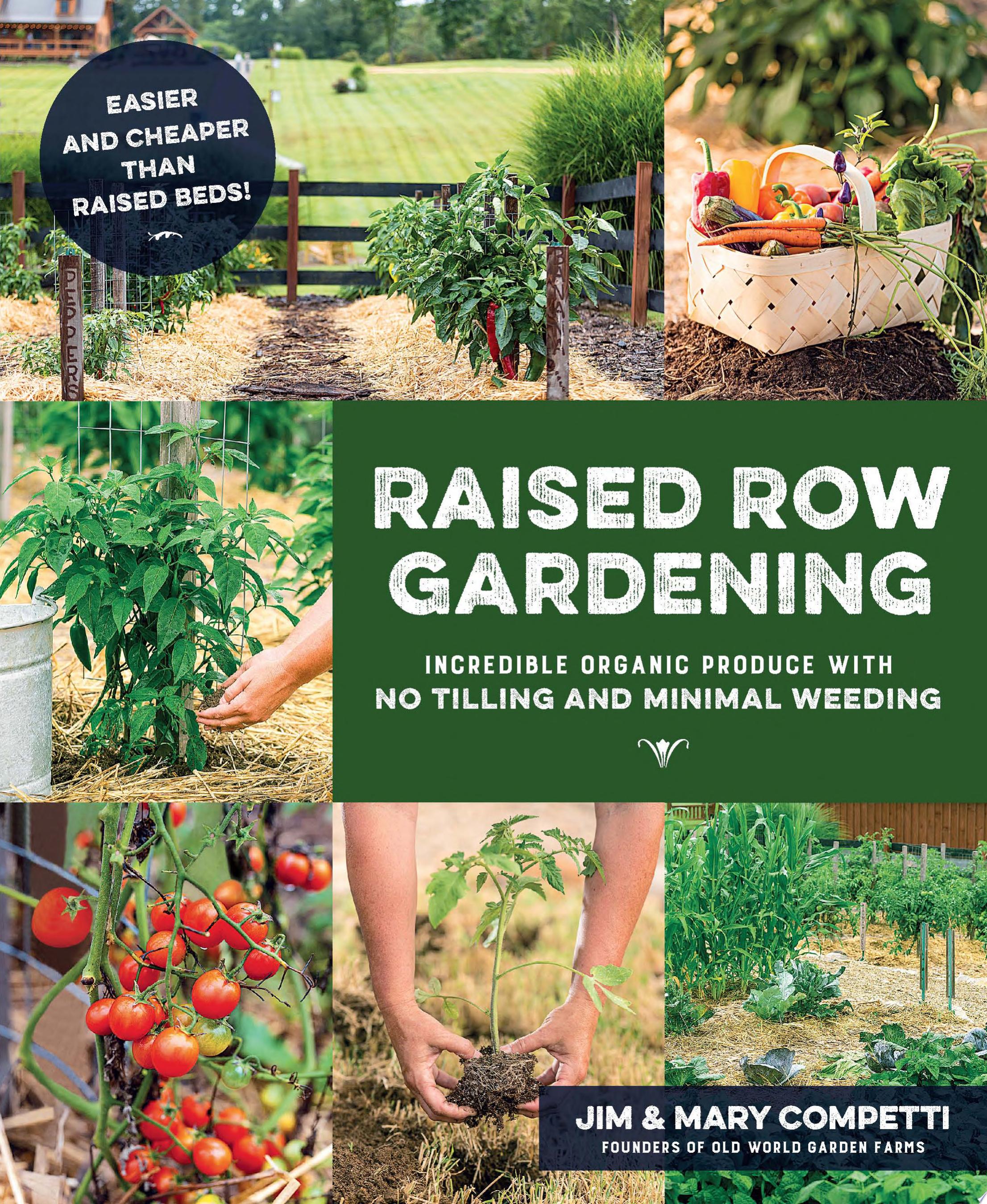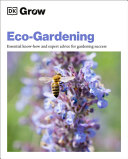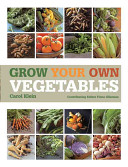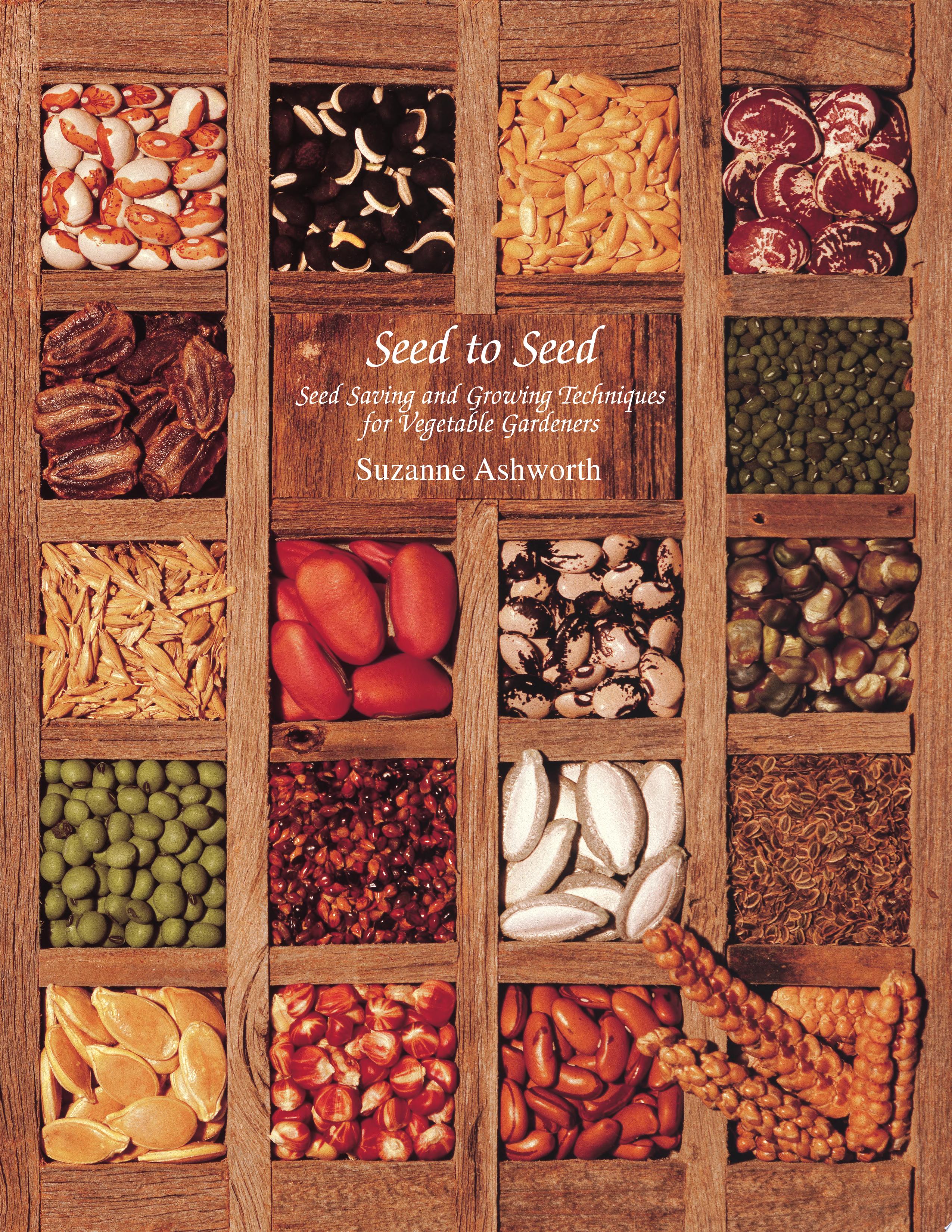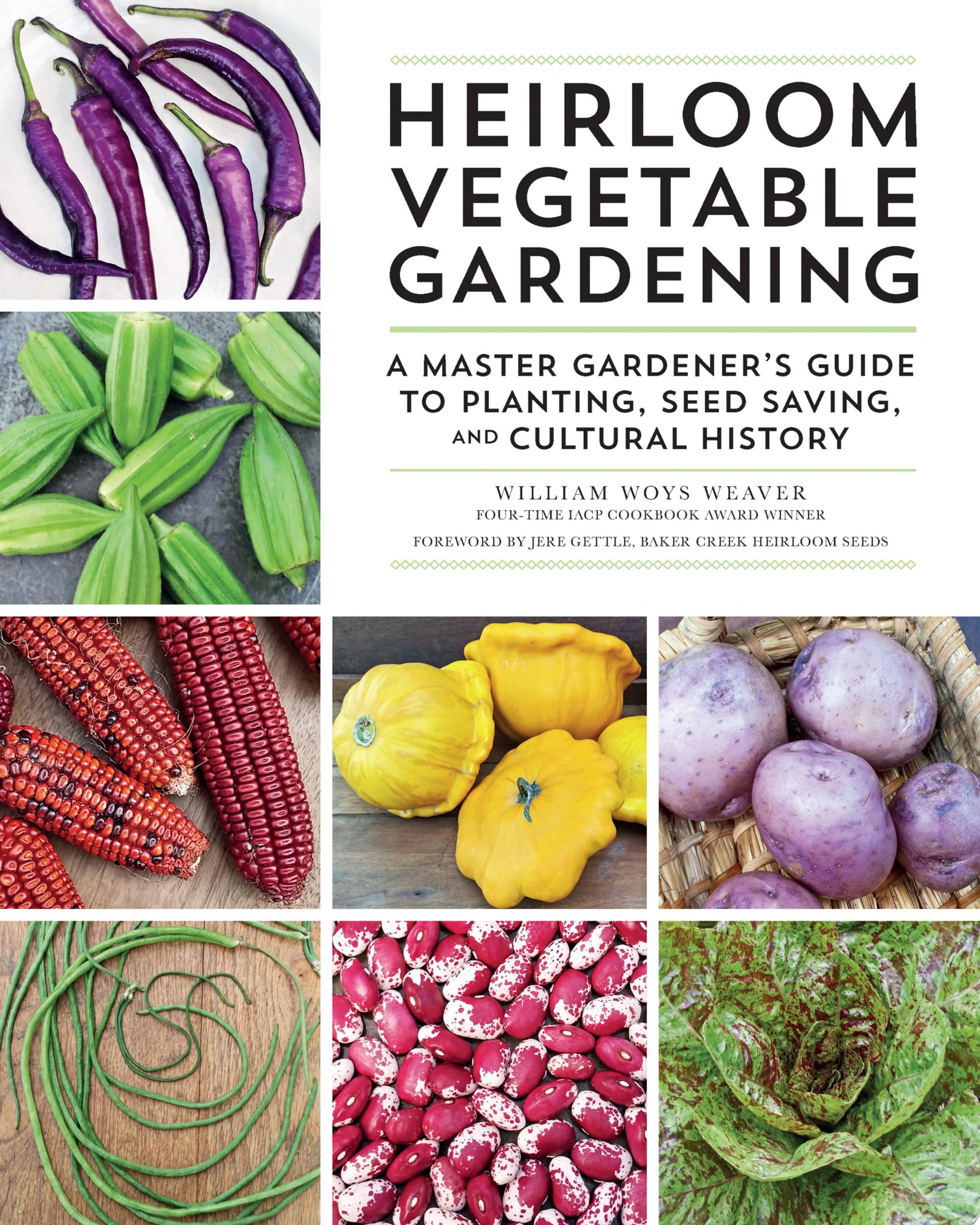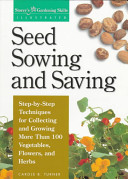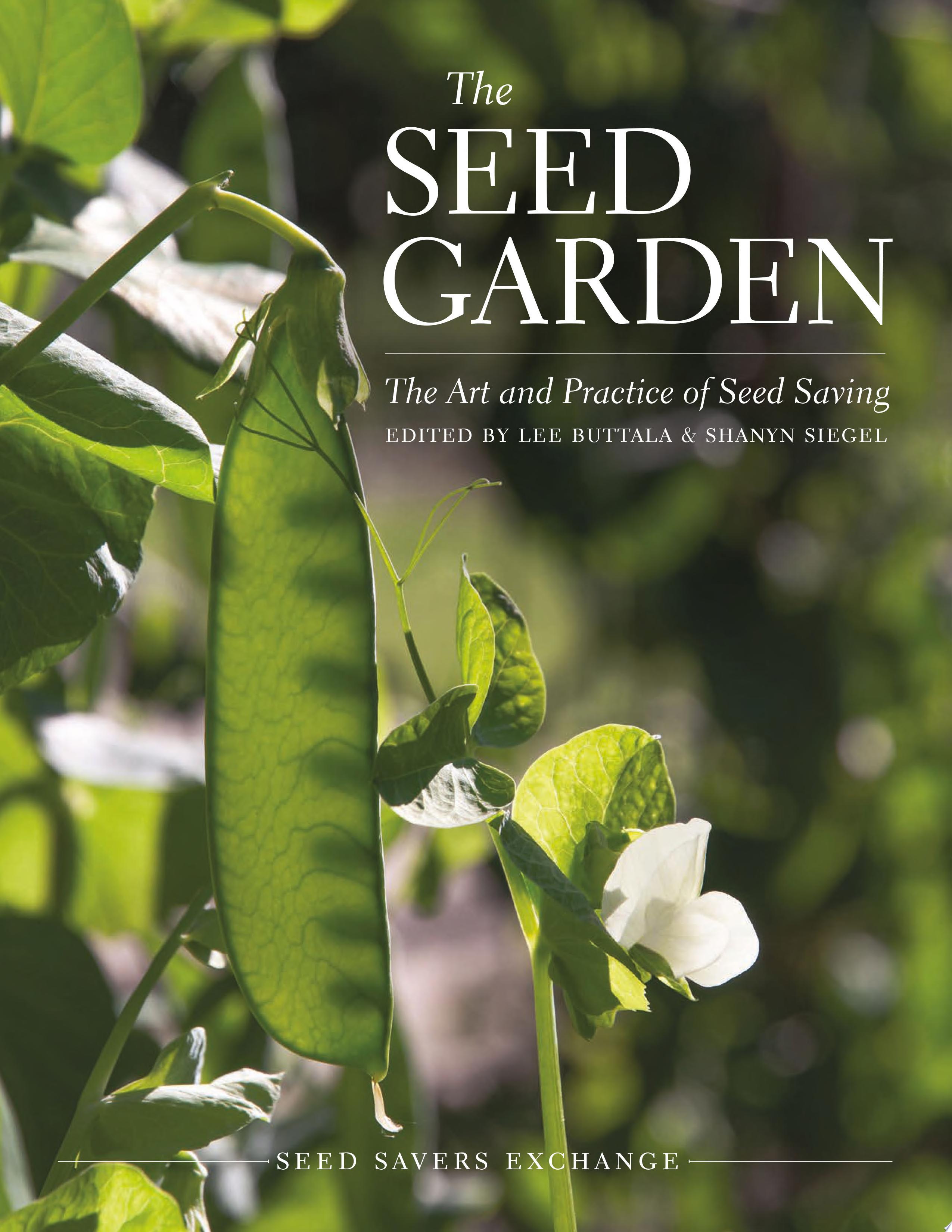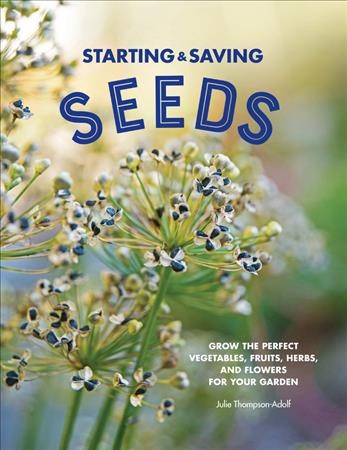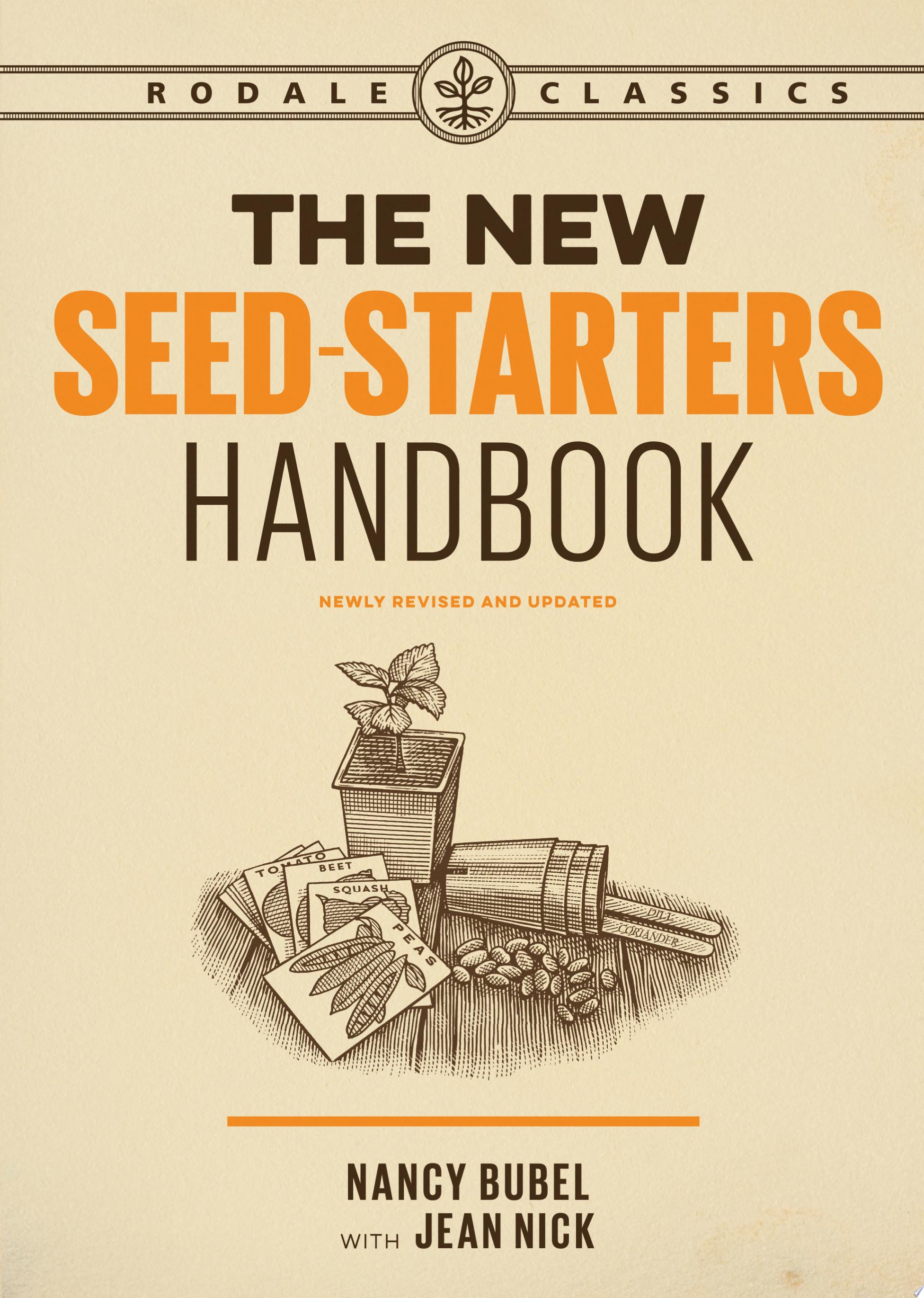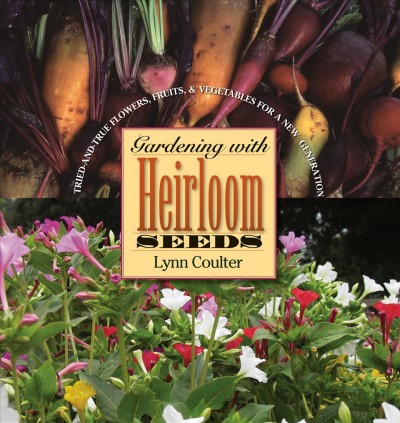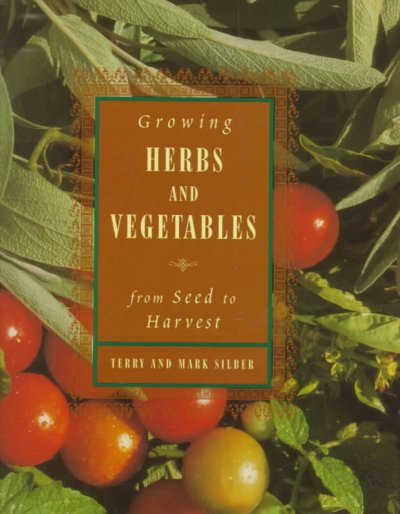List
The Container Victory Garden: a beginner's guide to growing your own groceries
Maggie Stuckey
Even if all you have is a postage stamp's worth of space on a balcony, patio, or front stoop, The Container Victory Garden equips you to dig into the joys of container gardening, right where you are.
Imagine this: In the morning, you pluck a few mint leaves from your backdoor herb garden and add them to your tea. A few hours later, you step out onto your patio and collect a handful of lettuce leaves for your lunch salad. Just before dinner, you harvest a few basil leaves and cherry tomatoes for a delicious caprese pasta.
In her trademark warm and informative style, bestselling author and expert gardener Maggie Stuckey shares everything you need to know to succeed with container gardening: planning, gearing up, planting, nurturing, and harvesting.
In The Container Victory Garden, you will find:
- detailed line art drawings that illustrate many gardening techniques and set-ups
- first-person stories of World War II Victory Gardens and their inspiration for today's gardeners
- beautiful full-color paintings of diverse people enjoying their container gardens
This is the promise of container gardening: a fresh bounty of vegetables, herbs, and edible flowers you can enjoy in every season.
Compost Science for Gardeners: simple methods for nutrient-rich soil
Robert Pavlis
Create your own compost and grow better plants.
With breathtaking clarity, Compost Science for Gardeners demystifies composting practices and helps readers determine the best technique for their unique situation. This comprehensive science-based book is your key to building healthier soil and growing better plants.
Using plain language and easy-to-follow instructions, this essential resource distills and blends the latest scientific research with the author's many decades of knowledge and experience into manageable form, debunking a host of common gardening myths along the way. Learn about:
- The role of composting in the ecological cycle
- Compostable materials to incorporate and those to avoid
- Browns and greens vs the carbon-to-nitrogen ratio
- The full range of composting methods, including cold and hot composting; composting in piles, bins, and tumblers; and pit and trench composting
- Keyhole gardening, food digesters, vermicomposting, bokashi, eco-enzyme fermentation, and more
- The relative merits and impact on the environment of each composting technique
- Using finished compost to improve soil health
Anyone can compost. Whether you are a balcony or backyard gardener, market gardener, small-scale farmer, or homesteader, or even if you are simply looking for a way to keep organic matter out of the landfill, this book will show you how to do it simply, safely, and sensibly.
The Seven-Step Homestead: a guide for creating the backyard microfarm of your dreams
Leah M. Webb
When faced with financial uncertainty or a potential disruption to the food supply, more people turn to vegetable gardening — for the joy, satisfaction, and sense of security that comes from growing food. Today’s gardeners want a bit of everything — vegetables, fruit, medicinal herbs, flowers for pollinators, and even chickens for eggs. The dream is to build a diverse landscape that serves multiple functions but achieving that goal can be intimidating and overwhelming. Homesteader Leah Webb shares her strategy for implementing a homestead plan in seven stages, starting small and gradually add more features each year. The Seven-Step Homestead takes readers through the process with a series of doable steps, beginning with establishing one or two raised beds of the easiest vegetables to grow, and gradually building up to the addition of fruit trees and berry bushes on hugelkulture mounds, a coop full of chickens, and a winter’s worth of storage crops. Step-by-step photos from the author's own homestead, accompanied by her hard-earned advice and instruction, make this a one-of-a-kind guide for anyone who aspires to free themselves from reliance on the commercial food system but doesn't know where to start or how to make it happen in a realistic way.
Lawns into Meadows
Owen Wormser
In Lawns Into Meadows, landscape designer Owen Wormser makes a case for the power and generosity of meadows. In a world where lawns have wreaked havoc on our natural ecosystems, meadows offer a compelling solution. They establish wildlife and pollinator habitats. They’re low-maintenance and low-cost. They have a built-in resilience that helps them weather climate extremes, and they can draw down and store far more carbon dioxide than any manicured lawn. They’re also beautiful, all year round.
Owen describes how to plant an organic meadow that’s right for your site, whether it’s a yard, community garden, or tired city lot. He shares advice on preparing your plot, coming up with the right design, and planting—all without using synthetic chemicals. He passes along tips on building support in neighborhoods where a tidy lawn is the standard. Owen also profiles twenty-one starter grasses and flowers for beginning meadow-makers, and offers guidance on how to grow each one.
To illuminate the many joys of meadow-building, Owen draws on his own stories, including how growing up off the grid in northern Maine, with no electricity or plumbing, prepared him for his work. The book, part how-to guide and part memoir, is for environmentalists and climate activists, gardeners and non-gardeners alike.
Lawns Into Meadows is part of Stone Pier Press’s Citizen Gardening series, which teaches readers how to grow food and garden in ways that are good for the planet.
The Incredible Journey of Plants
Stefano Mancuso
Named a Best Book of the Year for the Know-It-All by The Globe and Mail
In this richly illustrated volume, a leading neurobiologist presents fascinating stories of plant migration that reveal unexpected connections between nature and culture.
When we talk about migrations, we should study plants to understand that these phenomena are unstoppable. In the many different ways plants move, we can see the incessant action and drive to spread life that has led plants to colonize every possible environment on earth. The history of this relentless expansion is unknown to most people, but we can begin our exploration with these surprising tales, engagingly told by Stefano Mancuso.
Generation after generation, using spores, seeds, or any other means available, plants move in the world to conquer new spaces. They release huge quantities of spores that can be transported thousands of miles. The number and variety of tools through which seeds spread is astonishing: we have seeds dispersed by wind, by rolling on the ground, by animals, by water, or by a simple fall from the plant, which can happen thanks to propulsive mechanisms, the swaying of the mother plant, the drying of the fruit, and much more.
In this accessible, absorbing overview, Mancuso considers how plants convince animals to transport them around the world, and how some plants need particular animals to spread; how they have been able to grow in places so inaccessible and inhospitable as to remain isolated; how they resisted the atomic bomb and the Chernobyl disaster; how they are able to bring life to sterile islands; how they can travel through the ages, as they sail around the world.
The Healthy Vegetable Garden: a natural, chemical-free approach to soil, biodiversity and managing pests and diseases
Sally Morgan
Whether you’re an experienced gardener, homesteader, or market farmer, this A–Z, soil-to-table guide shows you how to reduce chemical inputs; naturally enrich your growing ecology; and create a hardy, nutrient-dense, and delicious crop.
In The Healthy Vegetable Garden, expert organic gardener Sally Morgan explains how to use natural approaches to cope with the challenges of a changing climate through principles from regenerative gardening, agroecology, and permaculture—all to help your green space thrive.
The Healthy Vegetable Garden shows you how to:
Combat disease and keep pests at bay with natural predators, companion planting, and trap and barrier crops
Choose the right plants to attract pollinators and pest predators
Build a healthy soil full of organic matter, earthworms, and mycorrhizal fungi
Regenerate soil through no-dig practices, composting, cover crops, and mulching
Boost biodiversity through the use of crop rotations and polyculture
Rewild your garden by creating a range of habitats, making use of walls and fences, log piles, water features, and wild corners
Understand plant defenses and use biocontrols
Make natural barriers, traps, and lures
A healthy, productive garden should work in harmony with nature to produce and protect delicious fruits and vegetables and build a rich soil that is full of life. With The Healthy Vegetable Garden, growers of all levels will start reducing incidents of pests and diseases while creating a verdant habitat—all without the need for fertilizers, pesticides, or weedkillers.
Organic Gardening for Everyone: homegrown vegetables made easy (no experience required)
CaliKim
If you want to grow healthy vegetables at home, but have hesitated because it seems too hard and time consuming, Organic Gardening for Everyone is your perfect hands-on guide—an “if I can do it, you can do it” case study that addresses your concerns and gets you started.
Loaded with practical advice and step-by-step guidance, Organic Gardening for Everyone takes a very personal and friendly approach to a subject that can be intimidating. It is a first-class primer on organic vegetable gardening, and an inspirational story about how anyone can balance the rigors of gardening with the demands of a modern, family-oriented lifestyle.
In 2012, a California mom decided to start an organic vegetable garden. But she went about it in an unusual way: she crowdsourced it by launching a YouTube channel under the name "CaliKim" and asking for help. And then she started planting. As questions came up, she turned to her viewers and subscribers and they replied with answers and advice. As she learned, her garden grew successfully—even in the hot, harsh California climate. Her expertise also grew, and now she answers many more questions than she asks and has become a very accomplished home gardener.
And CaliKim has a great story to tell: growing healthy organic vegetables for your family is not difficult, even for today’s time-challenged lifestyles. She provides complete step-by-step information on growing the most popular edibles organically, and also gives sound advice on how to take on the challenges of balancing a hectic lifestyle with successful growing—and how to involve the whole family in the process.
You'll be rewarded for your effort every time you place a plate of natural, organic vegetables on the family dinner table knowing exactly what they are, what is in them, and where they came from.
Raised Row Gardening: incredible organic produce with no tilling and minimal weeding
Jim & Mary Competti
Easier and Cheaper to Set Up Than Raised Beds!
For homeowners young and old looking for the easiest and most affordable way to grow the most vegetables, the Raised Row method shared in this breakthrough book is the new go-to choice. In the past decade, raised bed gardening has been wildly popular, but it requires buying wood or another material to build the raised beds, which quickly becomes expensive and labor intense. A raised row garden uses just soil and mulch, such as shredded leaves, to create raised growing rows and walking rows. This method is more budget-friendly, natural and just as effective to control weeds and see an impressive harvest your first year. Jim and Mary Competti, founders of the blog Old World Garden Farms, are the leaders of this gardening revolution. They’ve perfected and streamlined their method over several years. They spend only a few minutes per day maintaining a large garden that provides their family with food for the whole year. In this book, they share their secrets so anyone can do it too.
Raised rows utilize straw mulch, compost and cover crops to enrich the soil you have and keep down weeds naturally. This way, no backbreaking overturning of the beds is required, as it is for traditional row gardening. Now, readers can work less and enjoy the fruits of their gardens more!
Grow Eco-Gardening: essential know-how and expert advice for gardening success
Zia Allaway
Garden in a more sustainable wildlife-friendly way.
Ideal for first-time gardeners, Grow Eco-Gardening contains everything you need to know to care for the planet while you care for your garden. Discover how to minimize garden waste, mitigate the impact of changing weather patterns, and do your bit to reduce your carbon footprint and turn your outdoor space into a refuge for local wildlife with a wide selection of recommended plants including trees, climbers, and wildflowers.
Packed with practical, jargon-free know-how, this easy-to-use guide has everything you need to know to help your garden Grow.
Grow Your Own Vegetables
Carol Klein
Eating vegetables is good for you. Growing your own is even better.
"You are what you eat" may be a timeworn adage, but it makes a valid point. When you grow your own vegetables, you'll not only eat better food, but you'll also regain your connection to the seasons and the natural rhythms of life. Growing your own will change what's on your dinner table, and it will change you.
That's the philosophy behind Carol Klein's impeccably thorough guide to home vegetable gardening. In its pages, she reveals all the tricks to becoming a successful small-plot gardener, from preparing the soil, to deciding what to grow (and when to plant and harvest), to coping with pests, weeds, and other common problems. The book's second half is a veritable encyclopedia of the various vegetables-delicate salad greens, hardy root vegetables, and everything in between-that you might choose to grow.
Seed to Seed: seed saving and growing techniques for vegetable gardeners
Suzanne Ashworth
Seed to Seed is a complete seed-saving guide that describes specific techniques for saving the seeds of 160 different vegetables. This book contains detailed information about each vegetable, including its botanical classification, flower structure and means of pollination, required population size, isolation distance, techniques for caging or hand-pollination, and also the proper methods for harvesting, drying, cleaning, and storing the seeds.
Seed to Seed is widely acknowledged as the best guide available for home gardeners to learn effective ways to produce and store seeds on a small scale. The author has grown seed crops of every vegetable featured in the book, and has thoroughly researched and tested all of the techniques she recommends for the home garden.
This newly updated and greatly expanded Second Edition includes additional information about how to start each vegetable from seed, which has turned the book into a complete growing guide. Local knowledge about seed starting techniques for each vegetable has been shared by expert gardeners from seven regions of the United States-Northeast, Mid-Atlantic, Southeast/Gulf Coast, Midwest, Southwest, Central West Coast, and Northwest.
Heirloom Vegetable Gardening: a master gardener's guide to planting, growing, seed saving, and cultural history
William Woys Weaver
"This book is sure to be a modern classic and is one of the most important books on gardening in the current century."
—Jere Gettle, founder, Baker Creek Heirloom Seeds
Heirloom Vegetable Gardening has always been a book for gardeners and cooks interested in unique flavors, colors, and history in their produce. This updated edition has been improved throughout with growing zones, advice, and new plant entries. Line art has been replaced with lush, full-color photography. Yet at the core, this book delivers on the same promise it made two decades ago: It’s a comprehensive guide based on meticulous first-person research to these 300+ plants, making it a book to come back to season after season.
Seed Sowing and Saving: step-by-step techniques for collecting and growing more than 100 vegetables, flowers, and herbs
Carole B. Turner
Those pricey transplants set out on display every spring are so tempting with their leafy faces pleading, "take me home!" But beware, you never know where those seedlings have been - Crammed in a pest-infested greenhouse? Packed for days in a sweltering truck?
Start your plants from seeds and you know that's your precious vegetable, herb, or flower has been nurtured with tender loving care every day of its life. And better yet, when you harvest seeds for next year's crop, you'll get even more plants absolutely FREE!
In this book you'll find everything you need to know to successfully harvest seeds from more than 100 common vegetables, annuals, perennials, herbs, and wildflowers, then dry and store them for maximum viability. You'll also learn how to start seeds indoors to get a jump start on the season, and to prepare your soil beds for planting.
The Seed Garden: the art and practice of seed saving
Lee Buttala
Winner of the American Horticultural Society Award for Excellence In Garden Book Publishing
Winner of the Silver Medal for Best Reference from the Garden Writer’s Association
Filled with advice for the home gardener and the more seasoned horticulturist alike, The Seed Garden: The Art and Practice of Seed Saving provides straightforward instruction on collecting seed that is true-to-type and ready for sowing in next year’s garden. In this comprehensive book, Seed Savers Exchange, one of the foremost American authorities on the subject, and the Organic Seed Alliance bring together decades of knowledge to demystify the time-honored tradition of saving the seed of more than seventy-five coveted vegetable and herb crops—from heirloom tomatoes and long-favored varieties of beans, lettuces, and cabbages to centuries-old varieties of peppers and grains.
With clear instructions, lush photographs, and easy-to-comprehend profiles on individual vegetable crops, this book not only teaches us how to go about conserving these important varieties for future generations and for planting out in next year’s garden, it also provides a deeper understanding of the importance of saving these genetically valuable varieties of vegetables that have evolved over the centuries through careful selection by farmers and home gardeners.
Through simple lessons and master classes on crop selection, pollination, roguing, and the processes of harvesting and storing seeds, this book ensures that these time-honored traditions can continue. Many of these vegetable varieties are treasured for traits that are singular to their strain, whether that is a resistance to disease, an ability to grow well in a region for which that crop is not typically well suited, resistance to early bolting, or simply because it is a great-tasting variety. In an age of genetically modified crops and hybrid seed, a growing appreciation for saving seeds of these time-tested, open-pollinated cultivars has found a new audience from home vegetable gardeners and cooks to restaurant chefs and local farmers.
Whether interested in simply saving seeds for home use or working to conserve rare varieties of beloved squashes and tomatoes, this book provides a deeper understanding of the art, the science, and the joy of saving seeds.
Starting & Saving Seeds : grow the perfect vegetables, fruits, herbs and flowers for your garden
Julie Thompson-Adolf
Are you ready to become a seed-starting and -saving champion? Author and gardening expert Julie Thompson-Adolf will walk you through every step of the journey, making the entire process a joy. In this book you'll find: Extensive plant entries that cover all the most popular vegetables, fruits, herbs, and flowers; Tips and hints, such as how to encourage stubborn seeds to germinate; Lists to help you find the best plants to add to your garden, whether you want heirloom tomatoes for hot, humid climates or a rainbow of eggplants; Simple DIY projects to aid your seed-starting and -saving adventure; And much more! Whether you're an experienced gardener new to seed starting and saving or a brand-new grower, you'll soon have health, productive, beautiful plants for your garden.
The New Seed-Starters Handbook
Nancy Bubel
Starting plants from a seed grants earlier harvests, greater variety, healthier seedlings, lower costs, and the undeniable sense of satisfaction and reward.
For the most complete, up-to-date information on starting plants from seed, turn to The New Seed-Starter's Handbook. Written by a gardener with 30 years of experience, this updated, easy-to-use reference explains everything you need to know to start seeds and raise healthy seedlings successfully.
You'll find:
- The latest research in seed starting
- The best growing media
- The newest gardening materials
- Solutions to seed-starting problems
- Source lists for seeds and hard-to-find gardening supplies
The robust encyclopedia section lists more than 200 plants—including vegetables and fruits, garden flowers, wildflowers, herbs, trees, and shrubs—with details on how to start each from seed.
Gardening With Heirloom Seeds: tried-and-true flowers, fruits, and vegetables for a new generation
Lynn Coulter
Heirloom seeds are more than the promise of next summer's crookneck squash or jewel-colored zinnias. They're living antiques handed down from one generation to the next, a rich inheritance of flavor and beauty from long ago and, often, far away. They are sometimes better adapted to pests and harsh conditions than many modern varieties and often simply smell or taste better. Gardening with Heirloom Seeds serves as a resource for gardeners, cooks, and plant lovers of all levels of expertise who want to know more about finding, sharing, and propagating the seeds of heirloom flowers, fruits, and vegetables.
In these beautifully illustrated pages, Lynn Coulter describes fifty treasured heirloom species, from Frenchman's Darling, a flowering herb whose seeds were pocketed by Napoleon Bonaparte when he invaded Egypt in 1798, to Snow White beets, an old Dutch favorite that will not stain the cook's fingers red. Most of the plants included here will grow all across the United States; a few are best suited for warmer climates.
The text is sprinkled throughout with practical advice from heirloom gardeners and lists sources for finding the seeds of many old varieties. Because it also provides ample room for making notes, Gardening with Heirloom Seeds can be used year after year and can become an heirloom in its own right--a personal journal to pass along to the next generation of gardeners.
Growing Herbs and Vegetables: from seed to harvest
Mark Silber
An indispensable, wonderfully motivating growing guide, based on three decades of gardening experience, from the cofounders of Hedgehog Hill Farm in Sumner, Maine.
The Silbers tell us how to go about searching for just the right seeds, plants, and information; how to determine the number of plants we need; how to set up a germinating area; how to seed and transplant; how to use cold frames and other methods of "hardening off" our seedlings. They take us into the garden and explain how to evaluate soils and break up top growth. We learn about setting out plants; about direct seeding in mulched areas and open ground; about weeding, watering, and fertilizing. They share their wisdom about controlling insect damage and battling plant diseases; about accommodating animals while protecting crops; about harvesting, fall cleanup, and collecting, saving, and storing seeds from our own gardens.
Specific, detailed instructions are given for growing 37 vegetables--alphabetically arranged from asparagus to turnips--and 51 herbs, from angelica to woad. Well-organized charts make it easy to find essential information quickly, and drawings and photographs provide visual direction. Conveniently located sidebars give us guidance on such topics as growing hot peppers, planting mesclun, making sauerkraut, braiding onions, blanching cauliflower, growing moth-repellent herbs, making herb tempura and vinegars, and crystallizing flowers.
Here is a book guaranteed to inspire us to dig into the gardening catalogues and then into the earth to begin the adventure of producing our very own bountiful harvest.
